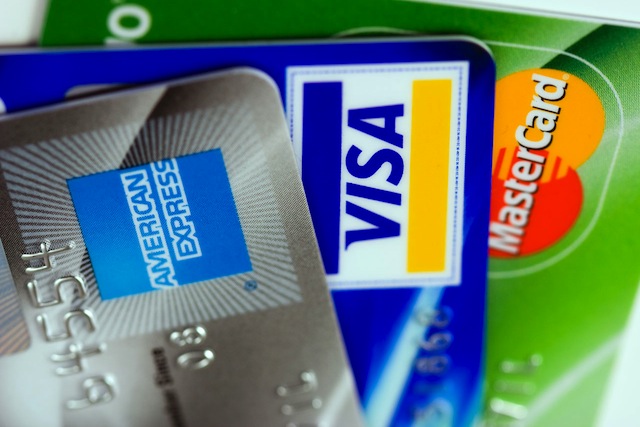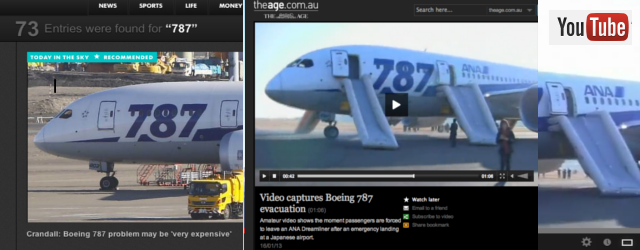So I saw a tweet and article recently that suggested that the new Qantas 787-9 configuration doesn’t have enough bathrooms for the premium cabin and that passengers would need to take a pee bottle to avoid renal failure. This seemed a little farfetched, so I thought I would run some quick numbers to see if indeed there was a likelihood of bathroom emergencies on these new aircraft.
I did a quick comparison to see what other airlines were doing in their business and economy cabins in relation to toilets. The Qantas plane in question has a toilet to passenger ratio of 14 in business and 49 in economy. That means that for each 14 business class passengers there is one available toilet. Thus, in the 42 seat cabin there are three toilets available.
I compared this to 35 other airlines seat configuration and found the average for business class to be 14.1. So the Qantas 787-9 seems pretty much on industry standard for business class. The results for economy were less favourable where the average was 43.1. However, across the Qantas long haul fleet in both classes the 787-9 has the best toilet to passenger ratio at Qantas. The table below outlines the numbers and shows the best, and worst airlines compared when considering access to the toilet.
How much time do passengers spend in the toilets on a flight?
Knowing the ratio of toilets to passengers is one thing, but how much toilet time is actually used up on a general flight? To answer this question, we need to look at two factors; frequency and duration. Normal frequency for urination is about 6 to 7 times in a 24-hour period, yet between 4 and 10 times a day can also be normal. So on average let us assume that people make their way to the bathroom around 6 times a day.
We can also hold about 500ml of urine comfortably for between 2-5 hours, so the average of 6 times a day allows us to comfortably hold and pass 3L of fluids each day. All seems quite reasonable so far. That means on an 18 hour flight from Perth to London, on average each passenger will need to visit the bathroom around four and a half times. To be generous and account for a few glasses of wine or beers (which I think we all agree makes us go a little more) lets round it up to 5 trips for a tinkle.
Without diving deep into google scholar, I couldn’t find many studies on how long us humans actually spend urinating. What goes on behind the cubicle doors seems to remain a secret. However, there have been some studies on other mammals, of which humans are also members of, that suggests that 21 seconds is the sweet spot regardless of animal size. The standard deviation in that study was 13 seconds, so let’s assume humans are the laziest and take 34 seconds to urinate. Let’s round that up to a minute to allow time to get ready for business and clean up after (e.g. pants down, sit down, stand up, pants up).
Let’s also be clean and add some time to the equation to allow for passengers to wash their hands. The US center for disease control recommends scrubbing with soap and water for 20 seconds after using the bathroom. I’ll round this up to a minute allowing plenty of time to wash, rinse and dry those dirty hands. Sadly, not everyone does this but let’s give them the time to do so to encourage them.
So we now have a rough estimate of how many times passengers would need to urinate, roughly how long it takes a human to do so, and allowed for some clean hands. The math therefore suggests that each passenger will spend 10 minutes in the bathroom having a tinkle on an 18hour flight.
How much time do passengers spend clearing bowels on a flight?
Of course urine is not all that comes out of us. On average humans empty our bowels every day (some of us more, some less, but let’s just work with averages). How long we spend doing this also isn’t really subject to much research. What we do know is that men spend longer in the toilet than women. Men on average spend an hour and 45 minutes per week on the toilet, whereas women average an hour and 20 minutes per week.
These averages probably also include time spent urinating, but let’s be conservative and say that it is just for emptying our bowels. Thus on average, passengers will be in the bathroom for about 1 and a half hours per week so, based on a once a day average, will spend about 12 minutes each time to get the job done. Making an assumption that everyone on the plane will average when they do this over a 24 hour period, in the 18 hour flight 75% of passengers are going to need to do a number two. Let’s assume they also wash their hands in that 12 minute visit to the restroom.
How many bathrooms do we need to avoid a toileting nightmare?
We know how many minutes each person needs to do their business, let’s work out how many minutes of bathroom time the plane needs to carry to meet this demand. Based on the Qantas 787-9 business class layout of 42 passengers, we will need 7 hours of bathroom time for every passenger to have comfortable bladders during the 18 hour flight. We also need to add 12 minutes for 75% of the passengers who will need to do more than just urinate. This results in another 6 hours and 20 minutes of bathroom occupation. Thus on average we will need 13 hours and 20 minutes of bathroom time for the 42 business class passengers.
How much bathroom capacity do new configurations have?
There are three bathrooms planned for the 787-9 Qantas will fly from Perth to London. Let’s assume the first and last hour of flight all lavatories are unavailable due to the seatbelt sign being on, and another two hours due to turbulence during the flight. That reduces the total available flight time per bathroom down to 14 hours. There are three bathrooms, thus there is a total bathroom capacity of 42 hours available.
Are passengers likely to suffer renal failure due to lack of bathroom access?
It’s unlikely. It appears that only about 32% of the available bathroom time is actually required during the flight. Sure people do other things in the bathroom other than just the essentials, but it seems there is a fair amount of capacity available to reduce the risk of renal failure. Toilet capacity might be restricted at peak periods (e.g. when everyone wakes up at the end of a flight) but it’s unrealistic to expect airlines to provide so much excess capacity.
I’m sure the engineers at Boeing, Airbus and the airlines have done actual studies to work out how long passengers spend in the bathrooms to configure the aircraft accordingly. Given we don’t often hear stories of aisles filled with human waste, they seem to get the equation right most of the time. Only time will tell if the ratio on the Dreamliner will be hit or miss, but given its exactly the same as the A330 which seems to fly without renal failure, I think she’ll be right.






No Comment